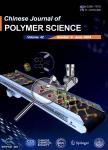Highly Hydrolysis-Resistant Polyimide Fibers Prepared by Thermal Crosslinking with Inherent Carboxyl Groups
作者机构:College of Polymer Science and EngineeringState Key Laboratory of Polymer Materials Engineering of ChinaSichuan UniversityChengdu610065China
出 版 物:《Chinese Journal of Polymer Science》 (高分子科学(英文版))
年 卷 期:2024年第42卷第2期
页 面:247-255,I0010页
核心收录:
学科分类:08[工学] 0805[工学-材料科学与工程(可授工学、理学学位)] 0703[理学-化学]
基 金:financially supported by the Scientific Research Innovation Plan of Shanghai Education Commission (No. 2019-01-07-00-03-E00001) the National Natural Science Foundation of China (Nos. U21A2087 and 21975040) the Natural Science Foundation of Shanghai (No. 21ZR1400200)。
主 题:Polyimide Carboxyl group Crosslinking Hydrolysis-resistance
摘 要:Easy hydrolysis in alkaline environments limits the use of polyimide fibers in environmental protection. The hydrolysis resistance levels of polyimide fibers can be improved by crosslinking of the macromolecular chains. In this work, crosslinked polyimide fibers(CPI fibers) were produced by intrinsic carboxyl decarboxylation for the first time. The thermal stability of the polyimide fibers containing the intrinsic carboxyl groups(PIC fibers) was studied, and the temperature of the decarboxylation-crosslinking reaction was determined to be 450 ℃. The PIC fibers were hotdrawn to initiate thermal crosslinking of the carboxyl groups and molecular chain orientation at high temperature. The CPI fibers had high tensile strengths(0.72-1.46 GPa) and compressive strengths(401-604 MPa). The oriented macromolecules and chemically crosslinked structure improved the tightness of the molecular chains and endowed the CPI fibers with excellent hydrolytic resistance. The CPI-50 fiber did not dissolve in a 0.5 wt% NaOH solution during heating at 90 ℃ for 10 h, and the tensile strength retention reached 87% when treated in 0.5 wt% NaOH solutions at 90 ℃ for 1 h, providing a guarantee for its application in alkaline corrosive environments.



